When he was a child, James Owuor loved hearing the elders talk about the way life used to be. So it comes as something of a surprise that at 38, he is now the one tasked with the job of describing the Before Times in Kenya’s Rift Valley. Before Lake Baringo started to rise, before it flooded and stole everything he knew.
“At the beginning, we just thought it was a bad rainy season, that the water would recede when the dry season came. It didn’t,” he says ruefully, peering over the edge of his motorized canoe at what used to be houses below the milky brown waters. Over the past decade, an unprecedented increase in annual rainfall—widely attributed to climate change—has raised the lake by 40 ft. (12 m), inundating nearly 22,000 acres and destroying homes, businesses and Roberts Camp, the lakeside resort where Owuor has worked for most of his adult life.
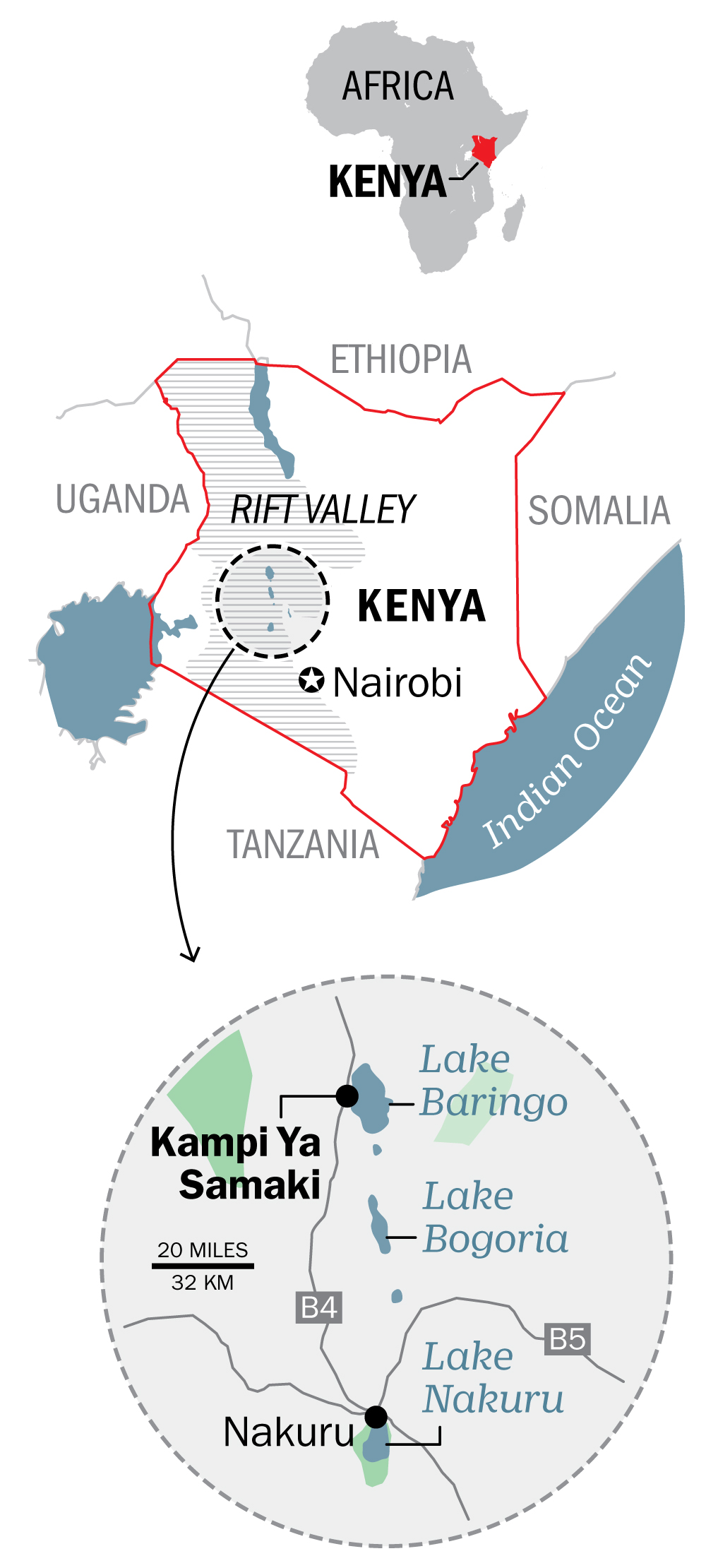
In 2014, he watched the waters overtake the two-story-tall shorefront lodge. The restaurant went next, then the bar. In September, the resort’s entrance gate on the road to the nearby town of Kampi Ya Samaki went under. Navigating through the drowned remnants of downtown, Owuor points out the remains of a fish factory’s roof. A crocodile paddles past the submerged rooms of the Lake Breeze Restaurant and Bar while a hippo grunts from the nave of a flooded church. Water laps at the third-floor balconies of the luxury Soi Safari Lodge, an 80-room resort that once employed 300 locals.
Read More: Climate Refugees Cannot Be Forced Home, U.N. Panel Says in Landmark Ruling
Eventually, he says, “people will have to leave this place and find somewhere else to live. If they were running a business, that means they probably will not have that business anymore. Life is drastically going to change.”
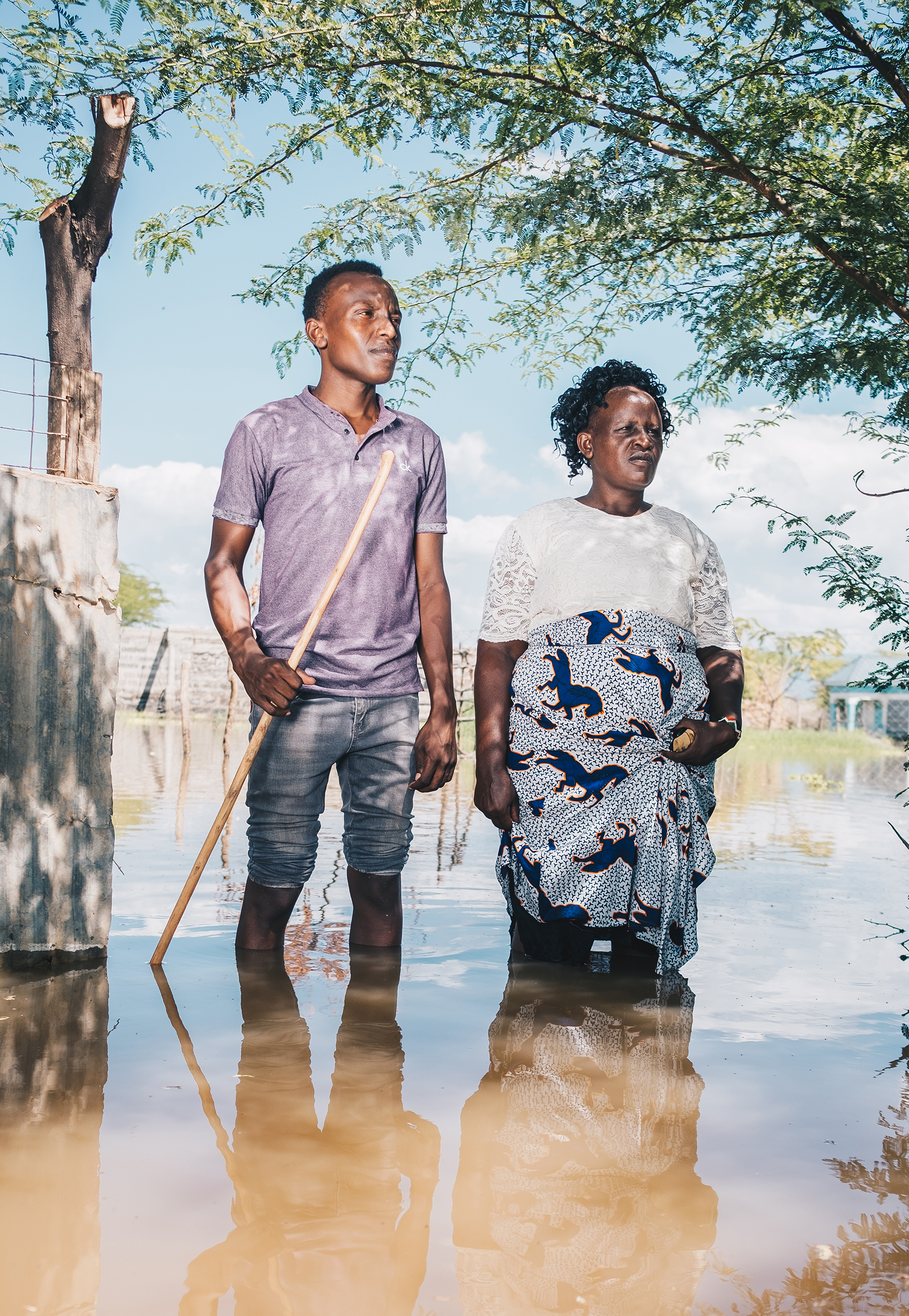
An even bigger threat looms. The nearby alkaline Lake Bogoria is also rising. Twice as salty as seawater, and home to more than a million flamingos, Lake Bogoria is on the brink of breaching its own natural barriers. If the waters rise up by another 4 m, says Professor Simon M. Onywere, a geologist at Kenyatta University’s department of environmental planning, it could flood freshwater Lake Baringo with a deadly spill of alkaline waters. The two lakes used to be 12 miles (20 km) apart. Over the past decade, climate change has nearly halved the distance.
The merging of the two lakes would be devastating, says Paul Chepsoi, an environmentalist and advocate for local Indigenous rights from the area. “It’s not just a worst-case scenario. It’s an ecological and human disaster.” More than 100,000 people depend on Baringo for income, from either fishing or agriculture. A saltwater influx would destroy both industries. “It means that livelihoods will be affected for generations to come,” Chepsoi says, standing in the middle of a paved road that once led to the gates of Bogoria’s national park. Water laps at his feet. A nearby lakeside lodge, like the park entrance sign behind him, is mostly underwater.
Nothing short of a catastrophic drought—the kind that would also destroy livelihoods—will stop the rising waters. “The people here will have to leave,” says Chepsoi. Many, he says, are already being forced to migrate to neighboring towns and cities largely unprepared for the influx. “The pressure of so many new arrivals will overwhelm the services providers,” he worries. “They are not prepared with housing, water, health care facilities or police.” Migration may be inevitable, but if the destination cannot absorb the new migrants, they may find themselves even worse off.
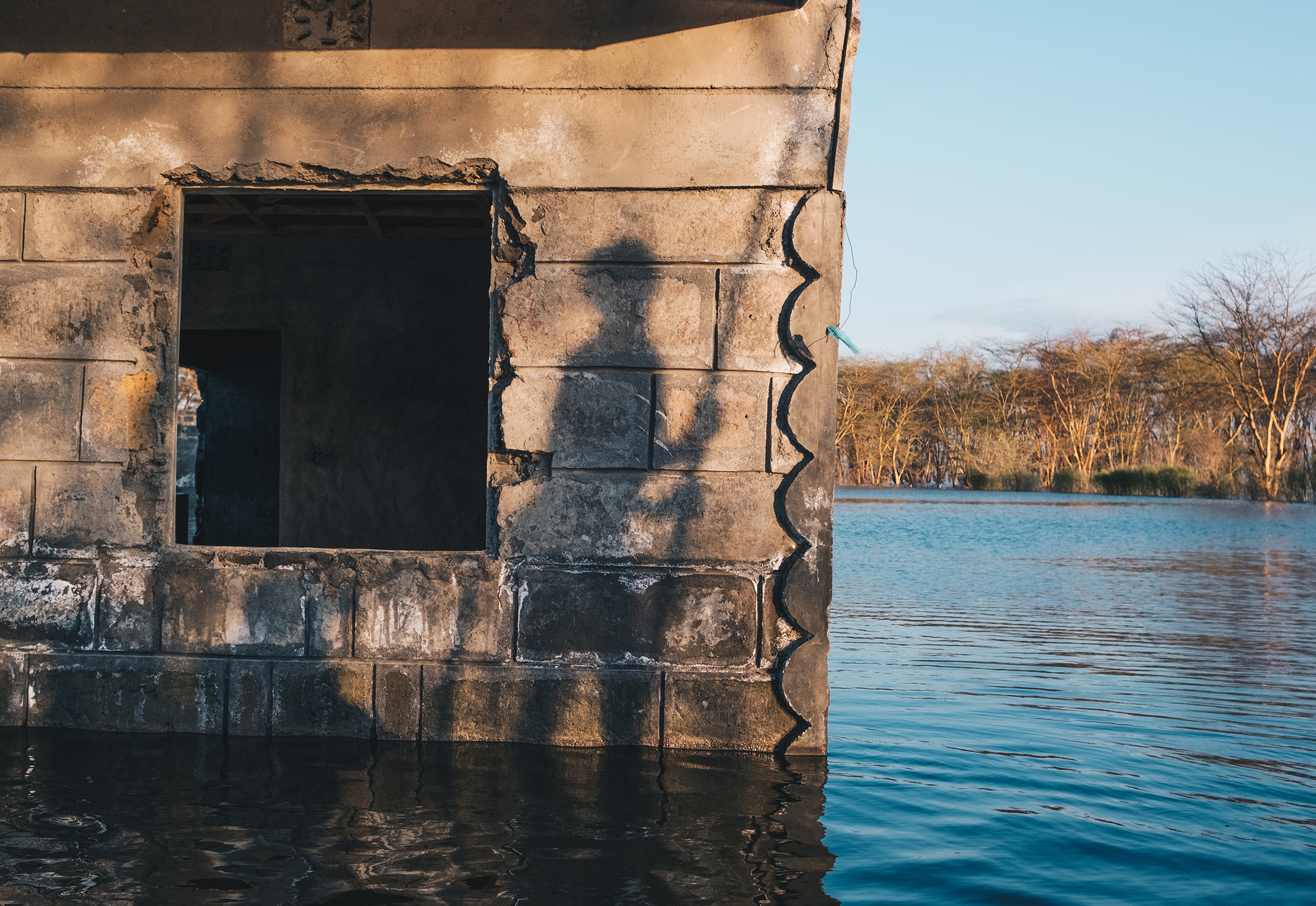
In some parts of the world, climate change brings drought. In Kenya’s Rift Valley, it has brought torrential, out-of-season rains over the past decade, which, combined with deforestation, have resulted in rising waters in all of the valley’s eight lakes. Some have nearly doubled in size, drowning pastureland, farms, homes, schools, churches, clinics and businesses in what Elizabeth Meyerhoff, an American social anthropologist who studies Rift Valley communities, calls a “slow-motion tsunami.” By the end of 2020, one of Kenya’s wettest years on record, Baringo had risen by several meters, and had claimed 34 sq. mi. of land.
The local ward administrator says that a health clinic, a technical college, five schools, seven churches, 48 shops and 1,250 houses—home to nearly a third of the population—have been destroyed. Thousands in the Rift Valley lakes region have been forced from their homes. They are part of a new, global movement of refugees fleeing not conflict but climate change.
Read More: The Pandemic Remade Every Corner of Society. Now It’s the Climate’s Turn
“If you just lose your income that is one thing, because you can adapt. You find another job or another field,” says Meyerhoff. “But once you lose everything— your home, your school, your clinic, your road, your church—then it’s an impossible situation. You become an environmental migrant because you have to find those facilities in some other place.” She is no detached observer; her own home for the past 40 years is just a few inches away from being swallowed by Baringo’s rising waters. In her notebook, she carries a photo of her teenage children leaping from her garden’s cliffside edge into the lake 40 ft. (12 m) below. Now in their 30s, they could sit in the same spot and dabble their feet in the water. They are begging her to pack up and leave; if she does, she will need to get a boat—the road to her house is already underwater.
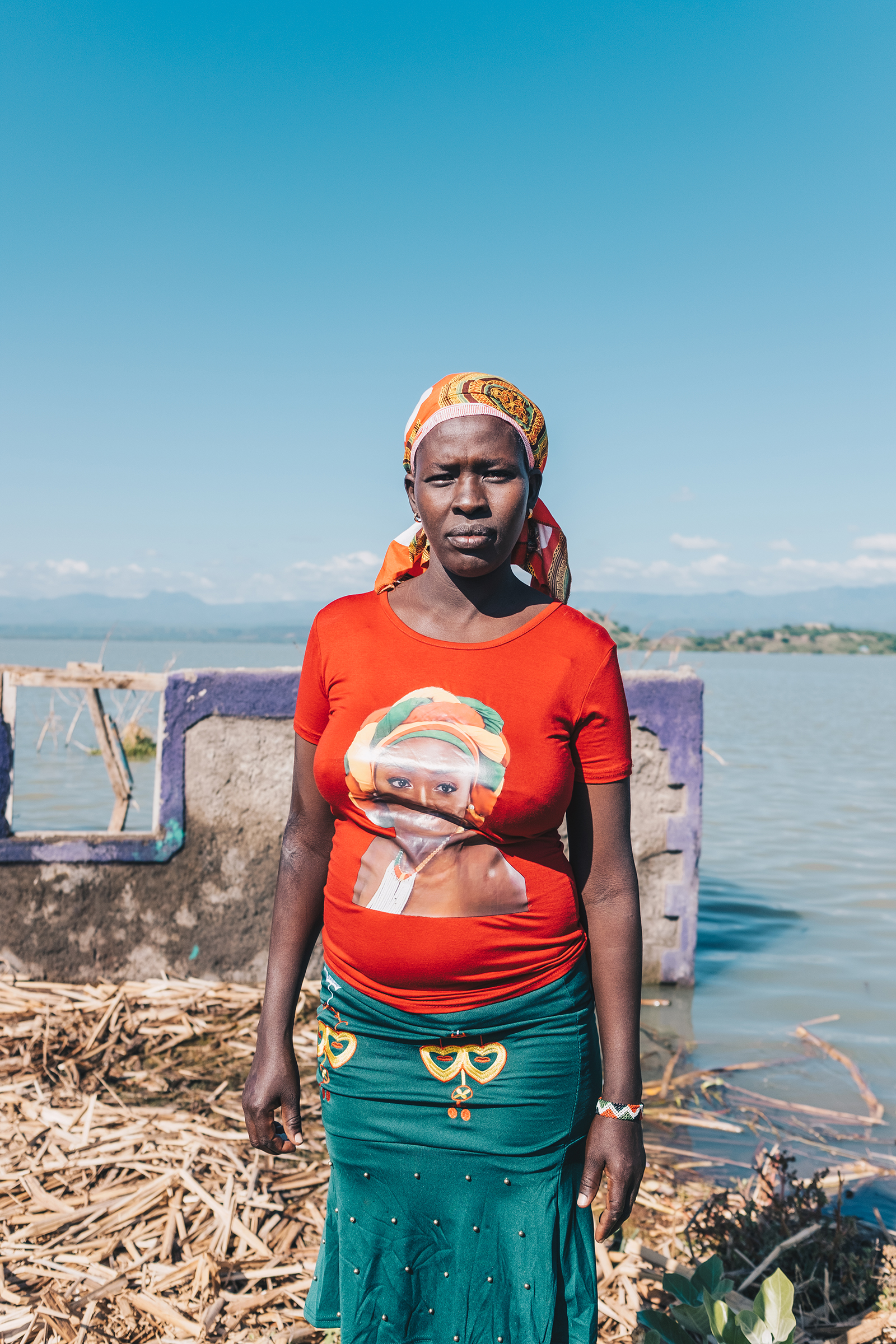
Some 24 million people—more than three times the number fleeing armed conflict—are displaced each year by ecological disasters such as floods, droughts, hurricanes, heat waves and rising sea levels, according to an October 2020 analysis by the Institute for Economics and Peace, a global think tank headquartered in Sydney. In the next 30 years, some 1.2 billion more people could be displaced if greenhouse-gas emissions continue on an upward trajectory, accelerating global warming and amplifying climate impacts, particularly in rural areas where livelihoods are dependent on the kind of agriculture most affected by changing weather patterns.
For a long time, experts have seen this kind of migration as flowing from the failure of carbon-spewing nations to rein in their emissions, along with the inability of poorer governments to protect their citizens through adequate adaptation measures. But that view is changing: there comes a point where no amount of infrastructure can hold back the sea, bring back the seasonal rains or cool the global climate. At that point, “migration becomes the adaptation strategy,” says Vittoria Zanuso, executive director of the Mayors Migration Council (MMC), a global organization that works with cities to develop comprehensive urban-migration programs. For many of these climate migrants, cities and towns will be their final destination.
Wealthy countries are not exempt. A 2018 study, published in the University of Chicago’s Journal of the Association of Environmental and Resource Economists, predicts that climate change will push 1 in 12 Southern and Midwestern residents of the U.S. to move to less affected areas in the Northeast and Northwest over the next 45 years. “It’s no longer a question of if climate migration is happening but rather who, how much, where and when,” says Alex Randall of the U.K.-based Climate and Migration Coalition. “Up until now, the focus has been on stopping people from migrating in the first place. Now the focus needs to be on how to make them an asset rather than a burden for the places they are going.”
Cities need migrants in order to grow, but chaotic, undirected migration can be as disruptive as an influx of salt into a freshwater lake. That means preparing towns for a new generation of climate migrants by building up infrastructure and increasing services from sanitation to education and health care—often a pricey undertaking for cash-strapped municipalities. New York City’s annual budget per resident is approximately $9,500; Nairobi’s is around $74.

Several cities—including Orlando; Dhaka, Bangladesh; and Freetown, Sierra Leone—have launched programs to build climate resilience while making sure new arrivals have opportunities for both safe housing and fair employment. These programs are usually funded by the municipality, but in order for them to expand, more investment is needed. International climate funds should play more of a role, says Randall. “Once you accept that moving is a form of adaptation, we would potentially get to a point where climate-adaptation finance could be spent on helping people move safely, or making sure cities had the necessary infrastructure for coping with rapid growth.”
As part of the discussions that led to the Paris Agreement, wealthier nations committed to contribute $100 billion a year to help poorer countries combat climate change through loans, grants, cash and private investments. The Green Climate Fund, as it is known, is the world’s largest fund dedicated to addressing climate change, but so far, only 20% of global contributions have gone toward adaptation, with the rest largely going to greenhouse-gas-reduction projects—despite a stated goal of 50-50 allocation. (Donor nations make the final decision on project financing.)
To developing nations that typically bear a lesser responsibility for the climate crisis, it’s an egregious oversight. “When it comes to a country like Bangladesh or Kenya, where our emissions are small to start with, telling us to use the money to reduce emissions doesn’t make sense,” says Saleemul Huq, director of the Dhaka-based International Centre for Climate Change and Development (ICCCAD). “We need the money for adaptation; that should be the priority.” Zanuso, of the MMC, estimates that urban-adaptation projects—enabling cities to absorb migrants in a way that helps them and their host communities flourish—receive only 3% to 5% of the adaptation funding that has been made available.
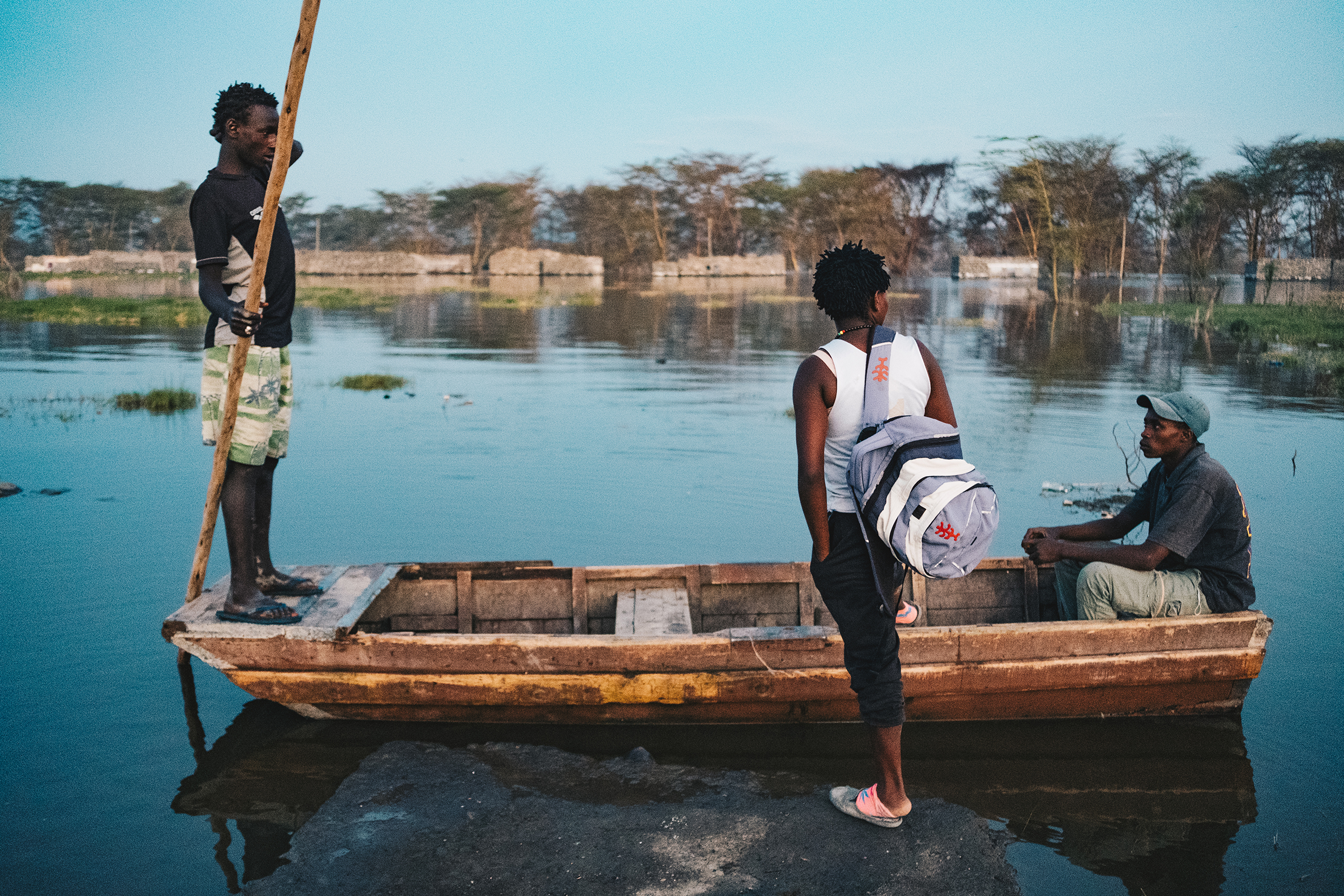
When the rising waters of Lake Nakuru, 85 miles (137 km) south of Lake Baringo, claimed the rural settlement of Mwariki in September, Evelyn Ajuang, a 41-year-old widow with close-cropped dark hair, had nowhere to go. She had just spent her entire life savings building and furnishing a four-bedroom house and had nothing to fall back on. So Ajuang took a single room in a low-income neighborhood in the middle of Nakuru town. She sold her goats and chickens to cover three months’ rent—besides, the concrete warren of crammed shacks offered no space for livestock. Now, unable to sell the eggs, milk and vegetables that once provided a steady income, she fears the uncertainty ahead.
Ajuang, like most of us, has only a vague understanding of how rising carbon emissions could trigger the rains that have flooded the Rift Valley lakes, but she knows enough to blame it for destroying her life. “Climate change is why I don’t think I will ever return to my home,” she says, eyeing the four rooms’ worth of furniture stacked to the ceiling of her rented room.
Ajuang has been thrust unprepared, and unsupported, into urban life. Every market day, she goes to the wholesale market across town to buy the vegetables she once grew in her own garden, which she sells for a slight profit in her new neighborhood. But transport is expensive, and competition is high. Most months, she can’t even make her $30 rent. So far, 153 families from Mwariki have lost their homes; another 174 farmers have lost their fields. Most are sheltering with family or charity organizations in town. While Kenyan authorities say they are looking into the matter, the former residents of Mwariki say the government has yet to distribute any substantial aid or even broach a resettlement plan, leaving victims in agonizing limbo. At least one has committed suicide, says community organizer David Kahoro; several have suffered heart attacks, and many are facing destitution. But it doesn’t have to be this way.
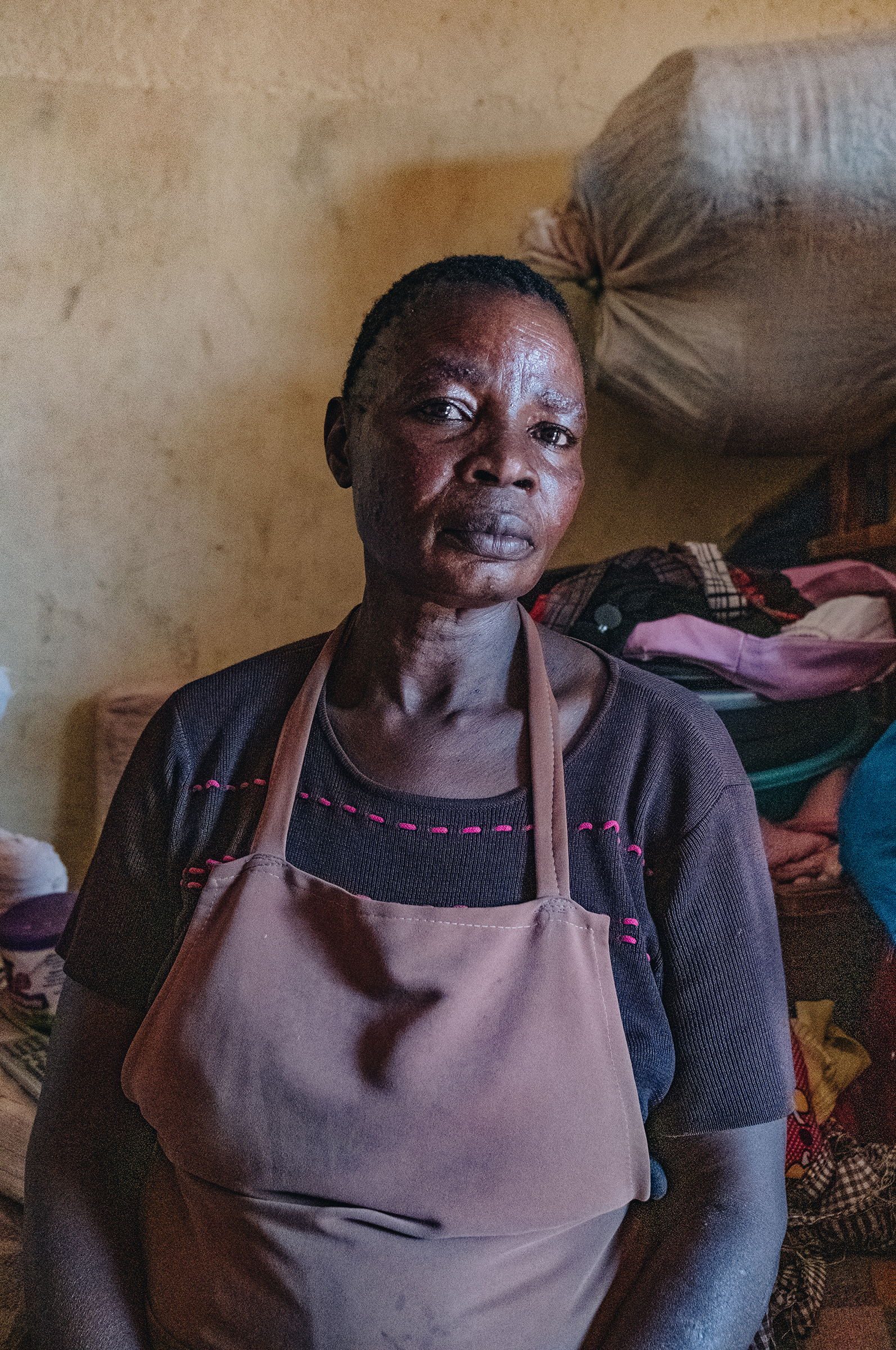
Sub-Saharan Africa is already one of the fastest urbanizing regions, with around 450 million city dwellers. That number is expected to climb to 621 million by 2030, the equivalent of adding two New York Citys to the continent each year. Climate change has been a major driver of this urbanization and is likely to increase the pressure on city infrastructure and resources, says sociologist Marc Helbling of Germany’s University of Mannheim. Helbling has tracked 50 years’ worth of urbanization trends in 133 countries and found that rising temperatures consistently lead to higher levels of rural-to-urban migration.
Done right, urbanization can foster economic growth. No modern country has ever reached middle-income status without urbanizing first. But uncontrolled, it can result in slums, mismanaged sprawl, poor public health and rising insecurity for residents—a city that is less inclusive, less productive and less sustainable. An influx of climate migrants could drive the development of several African megacities (population 10 million or more) into global powerhouses within the next decade and a half—but it could also create unprecedented mega-slums.
“If cities don’t start planning now for climate migrants, this will certainly increase all the problems that come with uncontrolled urbanization—overpopulation, increased pollution, sanitation challenges—and it means that they won’t be able to pre-empt the negative or indirect impact of those migrants,” says Linda Adhiambo Oucho, executive director of the Nairobi-based African Migration and Development Policy Centre.
That means doing something that few governments are good at: preparing for a crisis that hasn’t yet happened. Urban planning is a slow science, says Oucho. “We don’t want to get to a situation where we are talking about what to do about mass displacement when climate refugees are already streaming into the city; we need to start addressing it now while it is still manageable.” In part, that means expanding schools, health clinics, sewage systems and transport networks, but it also means making sure that the new arrivals move into safe areas where they won’t be exposed to additional climate hazards, like the flooding and storm surges that already threaten the low-income neighborhoods usually found in low-lying areas.
Most important is making sure that rural migrants are able to transition to urban livelihoods. “We don’t want to see cattle herders begging on street corners because they don’t have the skills to thrive in the city,” says Oucho. “The only way climate migrants can become a positive factor in urban growth is if they have the retraining and skills transfer that will allow them to adapt and survive and find new opportunities.”

While Kenya is only just starting to see the impacts of climate migration, some countries have had years of experience and can offer a template for urban-adaptation solutions. Bangladesh, with its population of 163 million relatively poor residents residing on a flood-prone delta threatened by rising sea levels, was once the global symbol for climate-change victims. But over the past decade, the nation has embarked on a multipronged adaptation strategy that is now starting to show results. “We are still very vulnerable,” says Huq of the ICCCAD, “but that vulnerability isn’t the story anymore. It’s how we deal with the vulnerability.”
The key, says Huq, is long-term thinking. Even as the adult population is taught to adapt by switching to salt-tolerant rice, or to farm shrimp instead of vegetables, younger generations are offered an education that will allow them to eventually flourish in an urban setting. “The second order of adaptation is preparing people to move by their own volition, not being forced to move [by climatic conditions] but being enabled to move and resettle in towns with greater protection.”
Huq’s center, which focuses on climate change and adaptation in developing countries, also works to divert migration streams away from the Bangladeshi capital, Dhaka, one of the fastest-growing cities in the world, toward secondary cities better prepared to absorb the flows. The center identified some 20 target towns on the basis of their ability both to withstand climatic changes and to offer employment and education opportunities for newcomers. The most overlooked part, he says, is what he calls the “software” that accompanies the “hardware” of infrastructure development: working with civil-society organizations to “help residents understand that there will be climate migrants coming in and that they need to be welcomed and supported so they can settle in and become citizens of that town.” Otherwise, he says, conflict between groups could derail progress.
To a certain extent, every place will have to keep its own unique geography in mind. The state of New Jersey, for example, has worked with Rutgers University to map out the areas most likely to flood as sea levels rise in the coming years in order to forestall risky development projects. That kind of thinking should be more widespread, says Randall, particularly when it comes to the poorer urban areas where climate migrants are most likely to settle. “What we are seeing at the moment is people leaving a rural area affected by drought, for example, and moving to a city where they’ve managed to find work but are living in an informal settlement that is vulnerable to flooding. They may have moved, but they have traded one kind of climate risk for another.”
And in some cases, a proactive climate-adaptation policy may mean helping whole communities start all over again. In Louisiana, government officials are spending $48.3 million to relocate several dozen households from the low-lying Isle de Jean Charles to higher ground 40 miles away, as part of the first federally funded, climate-change-induced community resettlement project in the U.S. Construction on the new houses started in May 2020.
Wholesale community relocation is expensive and best used as an option of last resort, but Ajuang, who lost her home to the rising waters of Lake Nakuru, can’t help wondering how different her life would have been if the government was able to offer her another property. She doesn’t think victims of the floods should get money, but having a safe place to land and the resources to start over would have helped. She worked for years to buy her own house to be self-sufficient in retirement and is desperate to regain that autonomy.
Wading hip-deep past what used to be her front porch one recent afternoon, she shoos away a pelican stalking fish in her old goat pen. Referring to the hustle that helped her get her own home, she says she would happily do it all over again, given an opportunity. She just needs a dry piece of land to start. “Without somewhere to go, the dreams I had for my future and my life will end just like that.”
—With reporting by Billy Perrigo/London and Sandra Mutuku/Nairobi
More Must-Reads from TIME
- Cybersecurity Experts Are Sounding the Alarm on DOGE
- Meet the 2025 Women of the Year
- The Harsh Truth About Disability Inclusion
- Why Do More Young Adults Have Cancer?
- Colman Domingo Leads With Radical Love
- How to Get Better at Doing Things Alone
- Michelle Zauner Stares Down the Darkness
Contact us at letters@time.com